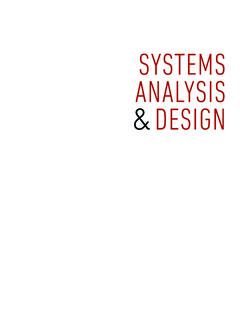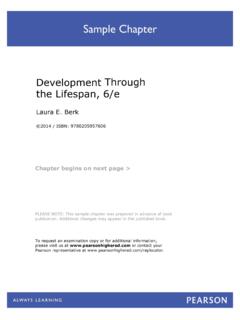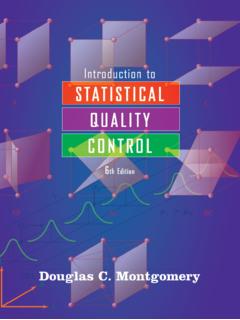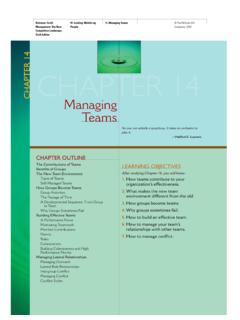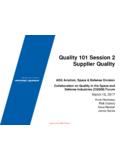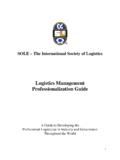Transcription of StrategieS for theory ConStruCtion nurSing
1 StrategieS for theory ConStruCtion in nurSingLorraine Olszewski Walker, RN, EdD, MPH, FAANThe University of Texas at AustinKay Coalson Avant, RN, PhD, FAANThe University of Texas Health Science Center at San AntonioSixth Edition330 Hudson Street, NY, NY Page 1 2/1/18 9:38 PM f-0039 /205/PH03433/9780134754079_WALKER/WALKER _STRATEGIES_FOR_THEORY_CONSTRUCTION_IN_N U ..Vice President, Health Science and TED: Julie Levin AlexanderDirector of Portfolio Management: Katrin BeacomEditor in Chief: Ashley DodgePortfolio Manager: Pamela FullerPortfolio Management Assistant: Erin SullivanAssociate Sponsoring Editor: Zoya ZamanProduct Marketing Manager: Christopher BarryField Marketing Manager: Brittany HammondVice President, Digital Studio and Content Production: Paul DeLucaDirector, Digital Studio and Content Production: Brian HylandManaging Producer: Jennifer SargunarContent Producer: Neha SharmaContent Producer (Team Lead): Faraz Sharique AliSenior Manager, Rights Management: Tanvi BhatiaOperations Specialist: Maura Zaldivar-GarciaCover Design: Cenveo Publisher ServicesCover Photo: Immersion Imagery/ ShutterstockFull-Service Management and Composition: iEnergizer Aptara.
2 LSC CommunicationsCover Printer: LSC CommunicationsText Font: 10/12 pt, Times LT Pro ISBN 13: 978-0-13-475407-9 ISBN 10: 0-13-475407-7 Library of Congress Cataloging-in-Publication DataNames: Walker, Lorraine Olszewski, author. | Avant, Kay Coalson, : StrategieS for theory ConStruCtion in nurSing / Lorraine Olszewski Walker, RN, EdD, MPH, FAAN, The University of Texas at Austin, Kay Coalson Avant, RN, PhD, FAAN, The University of Texas Health Science Center at San : Sixth edition. | Boston : Pearson, Prentice Hall, [2019] | Includes bibliographical references and : LCCN 2017058144 | ISBN 9780134754079 | ISBN 0134754077 Subjects: LCSH: nurSing Philosophy. | nurSing : LCC .W34 2019 | DDC dc23 LC record available at 18 Copyright 2019, 2011, 2005 by Pearson Education, Inc. All Rights Reserved. Manufactured in the United States of America.
3 This publication is protected by copyright, and permission should be obtained from the publisher prior to any prohibited reproduction, storage in a retrieval system, or transmission in any form or by any means, electronic, mechanical, photocopying, recording, or otherwise. For information regarding permissions, request forms, and the appropriate contacts within the Pearson Education Global Rights and Permissions department, please visit of third-party content appear on the appropriate page within the otherwise indicated herein, any third-party trademarks, logos, or icons that may appear in this work are the property of their respective owners, and any references to third-party trademarks, logos, icons, or other trade dress are for demonstrative or descriptive purposes only. Such references are not intended to imply any sponsorship, endorsement, authorization, or promotion of Pearson s products by the owners of such marks, or any relationship between the owner and Pearson Education, Inc.
4 , authors, licensees, or Page 2 2/1/18 9:38 PM f-0039 /205/PH03433/9780134754079_WALKER/WALKER _STRATEGIES_FOR_THEORY_CONSTRUCTION_IN_N U .. iiiCONTENTSP reface viiPart 1 Overview of theory and theory development 1 Chapter 1 theory IN nurSing : WHERE HAVE WE BEEN? WHERE ARE WE GOING? 3 theory development in nurSing : A Beginner s Guide 3A Historical Glimpse at theory in nurSing as a Profession 5 Evolution of theory development : Metatheory to Practice theory 7 Population- and Domain-Focused Theories and Models 21 Global nurSing theory development Issues and Efforts 24 Summary 29 References 30 Additional Readings 40 Chapter 2 USING KNOWLEDGE development AND theory TO INFORM PRACTICE 43 Introduction 44 Evidence-Based Practice and Practice-Based Evidence 45 nurSing Informatics 50 nurSing Practice Research and theory development 53 Summary 56 Practice Exercise 56 References 56 Additional Readings 59 Chapter 3 APPROACHES TO theory development 61 Introduction 61 Elements of theory Building 63 Interrelatedness of Elements 67 Approaches to theory Building 68 Strategy Selection 69 Interrelatedness of StrategieS 71 Summary 72 References 73 Additional Readings Page 3 2/1/18 9.
5 38 PM f-0039 /205/PH03433/9780134754079_WALKER/WALKER _STRATEGIES_FOR_THEORY_CONSTRUCTION_IN_N U ..iv ContentsPart 2 Derivation StrategieS 75 Chapter 4 CONCEPT DERIVATION 77 Definition and Description 77 Purpose and Uses 79 Procedures for Concept Derivation 79 Application of Concept Derivation to nurSing 82 Advantages and Limitations 83 Utilizing the Results of Concept Derivation 84 Summary 85 Practice Exercise 85 References 87 Chapter 5 STATEMENT DERIVATION 88 Definition and Description 88 Purpose and Uses 91 Procedures for Statement Derivation 92 Application of Statement Derivation to nurSing 92 Advantages and Limitations 94 Utilizing the Results of Statement Derivation 95 Summary 95 Practice Exercises 96 References 97 Additional Readings 98 Chapter 6 theory DERIVATION 99 Definition and Description 99 Purpose and Uses 100 Procedures for theory Derivation
6 101 Examples of theory Derivation 103 Application of theory Derivation to nurSing 105 Advantages and Limitations 107 Utilizing the Results of theory Derivation 108 Summary 108 Practice Exercises 109 References 109 Additional Readings 110 Part 3 Synthesis StrategieS 111 Chapter 7 CONCEPT SYNTHESIS 113 Definition and Description 113 Purpose and Uses 114 Approaches to Concept Synthesis 115 Procedures for Concept Synthesis Page 4 2/1/18 9:38 PM f-0039 /205/PH03433/9780134754079_WALKER/WALKER _STRATEGIES_FOR_THEORY_CONSTRUCTION_IN_N U .. Contents vAdvantages and Limitations 120 Utilizing the Results of Concept Synthesis 121 Summary 121 Practice Exercises 122 References 123 Additional Readings 125 Chapter 8 STATEMENT SYNTHESIS 127 Definition and Description 127 Purpose and Uses 129 Procedures for Statement Synthesis 131 Advantages and Limitations 143 Utilizing the Results of Statement Synthesis 143 Summary 144 Practice Exercise 144 Self-Assessment Test of Introductory Statistics 146 References 147 Additional Readings 148 Chapter 9 theory SYNTHESIS 149 Definition and
7 Description 149 Example of the Use of theory Synthesis Process 151 Purpose and Uses 152 Procedures for theory Synthesis 153 Illustrations of theory Synthesis 156 Advantages and Limitations 159 Utilizing the Results of theory Synthesis 159 theory Synthesis and Integrative Models and Theories 160 Summary 161 Practice Exercises 162 References 163 Additional Readings 164 Part 4 Analysis StrategieS 165 Chapter 10 CONCEPT ANALYSIS 167 Definition and Description 167 Purpose and Uses 168 Procedures for Concept Analysis 170 Advantages and Limitations 180 Utilizing the Results of Concept Analysis 184 Response to Criticism of this Method 184 Summary 186 An Additional Example and Practice Exercise 187 Practice Exercise 188 References 189 Additional Readings Page 5 2/1/18 9:38 PM f-0039 /205/PH03433/9780134754079_WALKER/WALKER _STRATEGIES_FOR_THEORY_CONSTRUCTION_IN_N U.
8 Vi Contents Chapter 11 STATEMENT ANALYSIS 194 Definition and Description 194 Purpose and Uses 195 Steps in Statement Analysis 196 Advantages and Limitations 203 Utilizing the Results of Statement Analysis 204 Summary 205 Practice Exercises 205 References 206 Additional Readings 207 Chapter 12 theory ANALYSIS 208 Definition and Description 208 Purpose and Uses 209 Procedures for theory Analysis 210 Advantages and Limitations 221 Utilizing the Results of theory Analysis 221 Summary 222 Practice Exercise 1 223 Practice Exercise 2 226 References 226 Additional Readings 227 PART 5 Perspectives on theory and Its Credibility 229 Chapter 13 ASSESSING THE CREDIBILITY AND SCOPE OF nurSing KNOWLEDGE development : CONCEPTS, STATEMENTS, AND THEORIES 231A Glance at Concept, Statement, and theory Testing 232 Concept Testing 234 Statement Testing 237 theory Testing 239 The Scope of nurSing Knowledge and Its Central Concerns 244 Closing Commentary 246 References 246 Additional Readings 249 Index Page 6 2/1/18 9:38 PM f-0039 /205/PH03433/9780134754079_WALKER/WALKER _STRATEGIES_FOR_THEORY_CONSTRUCTION_IN_N U.
9 ViiPREFACEThe aim of this book remains the same as at its inception: to provide readers with a resource on theory development written from a nurSing point of view. In particular, we have tried to consider the needs of the students beginning their study of theory development . Stepping into the complex philosophical and metatheoretical works on this topic can be confusing to those who have had no prior exposure to the subject matter. In addition, those works have become vastly more complex and numerous since the first edition of this book. Interest in theory development for nurSing also now reaches around the globe. There is also an impatience among nurses to see the rele-vance of theory to practice. Students in nurSing programs are also increasingly diverse in their educational backgrounds, and programs mirror that diversity by designing new educational pathways into nurSing and advanced study in recognition of these many changing factors, we have updated chapter materi-als so that readers may see advances in both the context of theory development in Chapters 1, 2, and 13 and the StrategieS for concept, statement, and theory develop-ment (Chapters 3 to 12).
10 Chapter 1 provides a historical context to theory development in nurSing , as well as new trends affecting theory in nurSing , and global perspectives on nurSing theory development and material on population- and domain-focused theories. A brief glossary and several reflective activities are provided in this chapter as well. Chapter 2 considers nurSing knowledge and theory in its dynamic relationship to practice. After illustrating how theory of a phenomenon may guide nurSing assessment and interven-tion, we cover a range of topics related to knowledge development in nurSing , includ-ing evidence-based practice, practice-based evidence, and informatics and its linkages to practice and nurSing theory . After considering the StrategieS for concept, statement, and theory development that follow, Chapter 13 covers validation and testing of con-cepts, statements, and theories.
